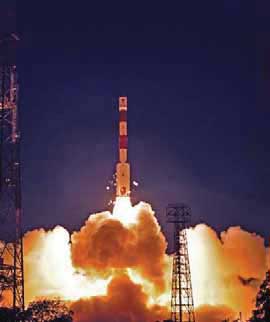Articles in the News Archives Category

GeoEye has announced a strategic relationship with Geostellar, an innovative technology company that is transforming the solar energy industry to supply Earth imagery, digital surface models and other mapping data to help Geostellar dramatically expand its service. Geostellar has built a breakthrough analytics platform that automatically determines how quickly a given property owner can recoup an investment in solar energy. It has built solar maps in Washington D.C., Boston, Indianapolis, Philadelphia, Pittsburgh and New Jersey, where government agencies have made aerial imagery freely available.
According to ABI research report, the market for radio frequency identification (RFID) transponders, readers, software and services will generate USD 70.5 billion from 2012 to the end of 2017. The market was boosted by a growth of USD 900 million in 2011 and the market is expected to grow 20 percent YOY per annum. Government, retail, and transportation and logistics have been identified as the most valuable sectors, accounting for 60 percent of accumulated revenue over the next five years.
More than 300 billion rubles ($10.1 billion) have been budgeted to the year 2020 for developing the Glonass satellite navigation system, Deputy Prime Minister Vladislav Surkov said recently. He said the government will make every effort to lend support to the satellite system and to develop its capabilities, including commercial ones, Interfax reported. He said Russia estimates that the navigation market in Russia was worth 12 billion rubles last year.
Galileo PRS signal reception Septentrio and QinetiQ, working in close partnership with the European Space Agency (ESA) and their industrial partners, achieved the world’s first successful reception of the encrypted Galileo Public Regulated Service (PRS) signal from the first Galileo satellites (launched in November 2011).
Lockheed Martin awarded a USD 32 million contract to ITT Exelis to build the navigation payloads for the GPS III space vehicles three and four. Exelis announced in December 2011 that it had successfully integrated and performed the initial power up of the full-size payload prototype known as GPS III Non-Flight Satellite Testbed (GNST) Navigation Payload Element. Scheduled for first launch in 2014, GPS III satellites will deliver significant improvements compared with current GPS space vehicles.
Rapid Eye imagery is being used by the MALAREO project to assist with malaria control programs in countries in southern Africa. While mosquitoes can obviously not be observed via satellite, their habitats, which are considered malaria risk areas, can be. The MALAREO project, funded by the European Commission under FP7, is a mixed European-African consortium which incorporates years of experience in malaria control with the Global Monitoring for Environment and Security (GMES) EO capacity.
The UN Cartographic Section (UNCS) is planning to develop global multi-scale geospatial datasets (or UNmap) for rapid map production and web mapping in support to the Security Council and the Secretariat including UN field missions. Currently, an interim version of UNmap in scales of 1:1 million, 1:5 million and 1:10 million are in the final stages of completion. These maps are being used as primary geo-databases for UNCS and UN field missions.
The European Union (EU) funded ‘i-GOing’ project, which aims to design, develop and demonstrate a precise indoor navigation service based on Galileo and advanced ‘pseudolite’ technologies. Pseudolites are small transceivers that are used to create a local, ground-based GNSS alternative. With the help of pseudolites, users will be able to locate themselves using GPS and Galileo signals, and then continue to receive accurate location signals in a seamless transition while moving into a building equipped with pseudolites.
The Pirate Bay (TPB), a bittorrent website, announced to take its networks off the earth’s surface. It is considering launching a series of ‘GPS-controlled drones, far-reaching cheap radio equipment and tiny new computers like the Raspberry Pi’ to float the Low Orbit Server Stations (LOSS). Through this way, it aims to keep the website safe from law enforcement of
With an aim to pinpoint distress calls for rapid search and rescue, Galileo navigation system will be harnessed, announced European Space Agency (ESA). It will test expansion of the humanitarian system over the next two years to make it more effective. In addition to conveying distress signals to search and rescue organisations, Galileo will also provide a novel service known as Return Link Service. Under this innovative service, the satellite will send a reply to those in distress, letting them know that their signal was picked up and help is on the way.










 (5.00 out of 5)
(5.00 out of 5)